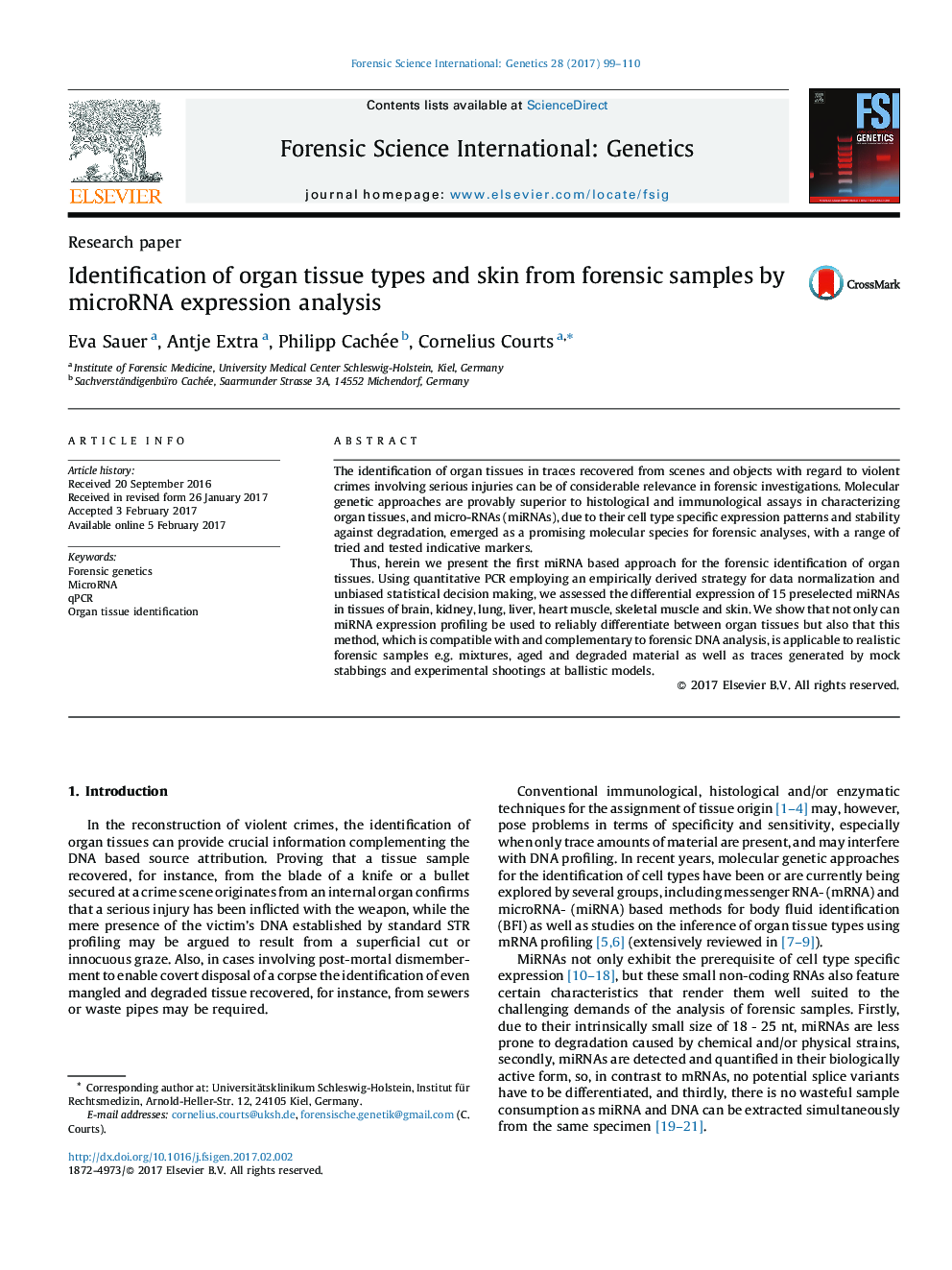| کد مقاله | کد نشریه | سال انتشار | مقاله انگلیسی | نسخه تمام متن |
|---|---|---|---|---|
| 6462825 | 1422150 | 2017 | 12 صفحه PDF | دانلود رایگان |
- First study on miRNA based forensic organ tissue identification (OTI).
- MiRNA expression analysis can differentiate six forensically relevant organ tissues.
- The method is applicable to realistic forensic samples from stabbings and shootings.
The identification of organ tissues in traces recovered from scenes and objects with regard to violent crimes involving serious injuries can be of considerable relevance in forensic investigations. Molecular genetic approaches are provably superior to histological and immunological assays in characterizing organ tissues, and micro-RNAs (miRNAs), due to their cell type specific expression patterns and stability against degradation, emerged as a promising molecular species for forensic analyses, with a range of tried and tested indicative markers.Thus, herein we present the first miRNA based approach for the forensic identification of organ tissues. Using quantitative PCR employing an empirically derived strategy for data normalization and unbiased statistical decision making, we assessed the differential expression of 15 preselected miRNAs in tissues of brain, kidney, lung, liver, heart muscle, skeletal muscle and skin. We show that not only can miRNA expression profiling be used to reliably differentiate between organ tissues but also that this method, which is compatible with and complementary to forensic DNA analysis, is applicable to realistic forensic samples e.g. mixtures, aged and degraded material as well as traces generated by mock stabbings and experimental shootings at ballistic models.
Journal: Forensic Science International: Genetics - Volume 28, May 2017, Pages 99-110
